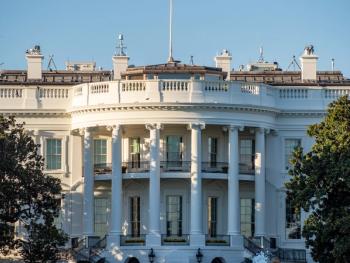
Hospital trauma fees vary by tens of thousands of dollars: Study
Researchers found facilities run the gamut, ranging from $1,000 to more than $60,000, according to findings published in Jama Network Open. The authors called for standardization of the fees.
Two decades after hospitals began charging “trauma activation fees,” health systems are taking wildly different approaches, with fees differing by tens of thousands of dollars.
Researchers found that hospitals are charging anywhere from $1,000 to more than $61,000, according to a study published in
The fees were first approved in 2002, and they are designed to cover the costs of mobilizing the medical personnel who are part of the trauma team. Hospitals argued such fees were necessary to sustain the high costs of operating trauma centers. However, they have also gained growing scrutiny, particularly given the wide variation in costs at some providers.
Trauma centers in the west charged the highest fees, while hospitals in the northeast typically imposed lower fees. For-profit hospitals for the most part charged higher fees.
The researchers suggested a more standard approach should be considered.
“These findings suggest that some patients with serious traumatic injuries will incur disproportionately high trauma activation fees depending on the trauma center to which they are brought. Therefore, standardization of trauma activation fees is warranted,” the authors wrote.
The trauma activation fee policies are significant. Patients being brought to trauma centers aren’t going to be in the position to do comparison shopping with other hospitals, the study’s authors noted.
Researchers from Mount Sinai Medical Center in Miami Beach Florida and Florida International University examined the prices of the activation fees at more than 500 hospitals.
The researchers found dramatic differences in the pricing and said their analysis, to their knowledge, is the most comprehensive of trauma activation fees to date. The data was collected between January 2 and March 11, 2022. Here are some key findings from the study.
- The median trauma activation fee was $9,500.
- Hospitals in the west had the highest activation fees, with a median of $18,099. By contrast, the median activation fee in the northeast was $5,841.
- For-profit hospitals imposed higher activation fees, the researchers said. The HCA Healthcare system, the large for-profit organization based in Nashville, Tenn., operates 43 trauma centers in the analysis, with a median activation fee of $29,999. HCA owns the majority of the nation’s for-profit trauma centers. However, HCA barely eclipsed the TENET Healthcare system, which had a median activation fee of $29,924 at seven trauma centers.
- The Providence system had the highest median trauma fee of any non-profit hospital system ($23,680), the study found. The NYC Health + Hospitals system, a government-run system, had the lowest median trauma activation fees of any hospital system with a minimum of 5 trauma centers ($1,817).
- Nevada had the highest median activation fee at $27,544. In California, the median activation fee was $24,057. While researchers noted California is a more expensive place to live, they also pointed out that New York, which doesn’t exactly have a modest cost of living, had a median activation fee of $6,047.
- The lowest median activation fee was found in West Virginia: $1,782. Massachusetts had a median activation fee of $3,491, the lowest among the 10 states with the most trauma centers.
The researchers said they couldn’t explain such a wide variation in the trauma fees between different states. California, for example, had a median trauma fee about seven times higher than Massachusetts.
Trauma centers have proven to be successful in improving the survival rates of patients who have been seriously hurt, the researchers noted. A 2006
However, the researchers of the new study also pointed out that some research suggested that more than one-third of patients who are taken to trauma centers don’t meet the triage guidelines and could be treated at local hospitals.
Those patients, or their insurers, are paying higher costs that may not be needed, the authors noted.
“Given that patients who sustain severe injuries have little choice about the trauma center to which they are brought, standardization of trauma activation fees, allowing only for small variations by region to allow for differences in cost of living, is warranted,” the researchers wrote.








































